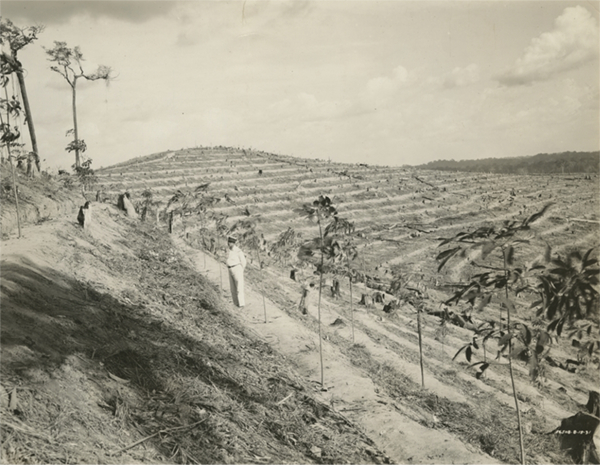In the heart of the Amazon rainforest, forgotten by time and secluded from the bustling rhythms of modern civilization, lies a ghost town: Fordlandia. This was a city born out of the ambitious vision of Henry Ford, the great American industrialist. Fordlandia was conceived as a utopian city, an embodiment of Ford’s ideals and a manifestation of the American Dream nestled within the Amazon, but it fell far short of this aspiration. Join us on this journey as we uncover what happened to this lost city.
The Dream of Fordlandia
Ford’s vision for Fordlandia was shaped by a combination of practical needs and idealistic beliefs. The rise of the automobile industry, particularly with Ford’s Model T becoming the first affordable automobile in 1908, led to an increased demand for rubber, a critical component in car manufacturing. British colonies dominated global rubber production, leading to inflated rubber prices.
Ford wanted to establish a rubber plantation to circumvent the British monopoly on the global rubber market. Choosing the Amazon for his utopian city was a strategic move. The region was, and still is, home to the rubber tree, Hevea brasiliensis, the primary source of natural rubber. Ford’s belief that rubber ought to be grown in its natural homeland, Brazil, and that he could use the land as a kind of blank slate for his utopian city with American values at its core.
The Rise of Fordlandia
Ford’s development was both rapid and ambitious. After selecting a site along the Tapajós River in Pará, Brazil, in 1926, Ford procured over two million acres of land at no cost from the Brazilian government. In return, Ford agreed to pay seven percent of his early income to the Brazilian government and two percent of the annual profits to the local municipalities after operating for 12 years.
Ford invested approximately $2 million to construct the city, essentially building it from the ground up. The city was planned to include a hospital, a school, a library, and even a hotel. The architectural style of the buildings was distinctly American, further emphasizing Ford’s intention to recreate a slice of American life in the heart of the Amazon.

The Challenges
Despite its promising start, Fordlandia faced significant challenges. One of the main problems was the Amazon’s heavy rainfall, which caused the fertile soil needed for the rubber trees to wash away. Adjustment was needed on the landscape to prevent flood damage. But the trouble didn’t stop there. Dry spells, diseases, and bugs that harmed the trees also came up. Also the individuals that were sent to manage the land were not trained horticulturalists.
The significant cultural chasm between the American lifestyle and local traditions further worsened the situation. The mandated work hours, imposed Midwestern-style diet, expectation, requirement to live in small, shared houses—a striking contrast from their traditional homes—were met with resentment and led to labor unrest.
The Fall of Fordlandia
By the late 1930s, it was apparent that Fordlandia was failing. The inexperienced managers appointed by Ford were not equipped to handle the unique challenges of the Amazon, meanwhile diseases were destroying the trees,further exacerbating the problems the city faced. The plantation had yet to produce a significant amount of viable rubber, and the cost of maintaining the city was escalating. Furthermore, synthetic rubber, developed during World War II, was becoming a more economical alternative, undermining the need for Ford’s ambitious project. In 1945, Ford’s grandson, Henry Ford II, decided to cut the company’s losses. He sold Fordlandia back to the Brazilian government for a fraction of its initial cost, thus marking the end of Henry Ford’s Amazonian dream.
Lessons from Fordlandia
Remnants of this once-thriving city can still be observed. Fordlandia remains a fascinating testament to the audacious dreams of one of history’s most influential industrialists. While Ford’s vision for a utopian city in the Amazon ultimately fell short, its legacy endures in the lessons it offers.
Here, a utopian city was conceived and planned with the intention of emulating an American lifestyle, thousands of miles away in the heart of the Amazon. This endeavor was pursued without proper consideration for the existing cultural, environmental, and social conditions of the region. Fordlandia, with its misplaced ideals, serves as a cautionary tale of urban development gone awry.

“Traveling is the art of collecting stories, not just souvenirs.”
